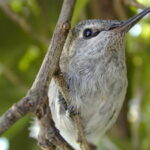I’m sure you’ve seen a flower with a cone-shaped middle surrounded by purple petals growing in a garden before. This wonderful perennial flower is very common to flower gardens. It looks good in many different places as its delicate shape adds to the appearance of any landscape design and is great for attracting butterflies. But its not just echinacea good looks, also known as purple cone-flower, that make it popular. The flower is also a herb with a longstanding place in traditional herbal medicine in both North America and Europe. It was often used by American Indians to take care of colds and the flu by stimulating the immune system. Today its still widely used in herbal medicine and grown in many gardens wherever the plant is able to survive.
You can grow echinacea yourself from seed, root division, or buy the plant from a nursery greenhouse already grown. Plant echinacea in the Spring in well-drained soil that contains at least some organic matter though it will tolerate heavy clay-like soils. I’ve grown my own purple echinacea in clay soil with good results. The seeds should be planted about half an inch deep with a light covering of soil over it and spaced at least 6 inches apart. Remember, like most herbs echinacea doesn’t take kindly to getting overly moist so don’t plant too deep and provide good drainage in the form of sand in the soil. This herb flower doesn’t really need any fertilizer as long as its rooted in good quality soil that has some organic matter in it. It generally takes 10 to 25 days for the seeds to germinate.
Make sure the location you plan on planting echinacea is located in an area that gets full sun exposure. This way the soil is never allowed to become too moist and so you don’t have to worry about over-watering. Echinacea really doesn’t require too much attention due to being such a hardy perennial plant. It roots well in most soil types though you’ll probably want to rake out any rocks before planting echinacea. It also doesn’t do well when trying to compete with weeds for soil nutrients so lay down wood mulch around your echinacea flowers to keep the weeds away. Echinacea can grow up to 5 feet and taller so make sure you plant them behind your shorter plants so they don’t block out sunlight or your view of other plants. You should water the herb everyday in warm weather and as it gets cooler outside water every other day or less.
Echinacea blooms in the late summer through fall and its flower heads can last a very long time. So the effort you put into caring for your purple cone-flower will be worth it as you’ll be able to enjoy them very late into the year! When the frost does arrive cut the stems back and mulch the surrounding area over to protect the root system. Next Spring you will be rewarded once again with the sight of cone-shaped purple flowers decorating your garden and flower beds.





